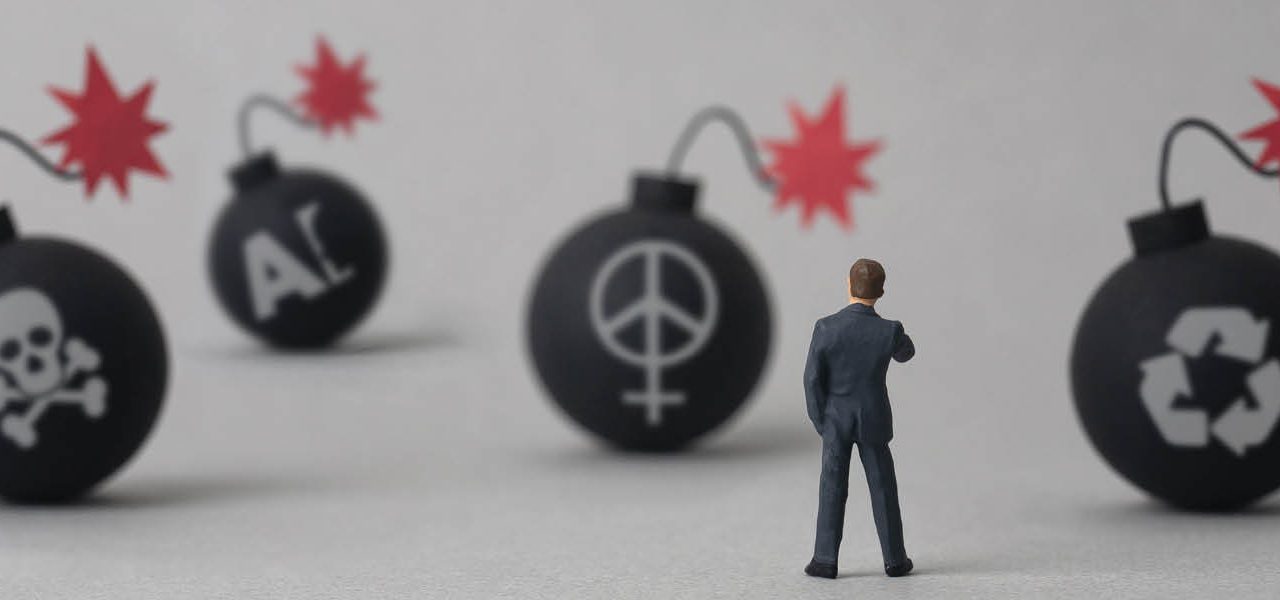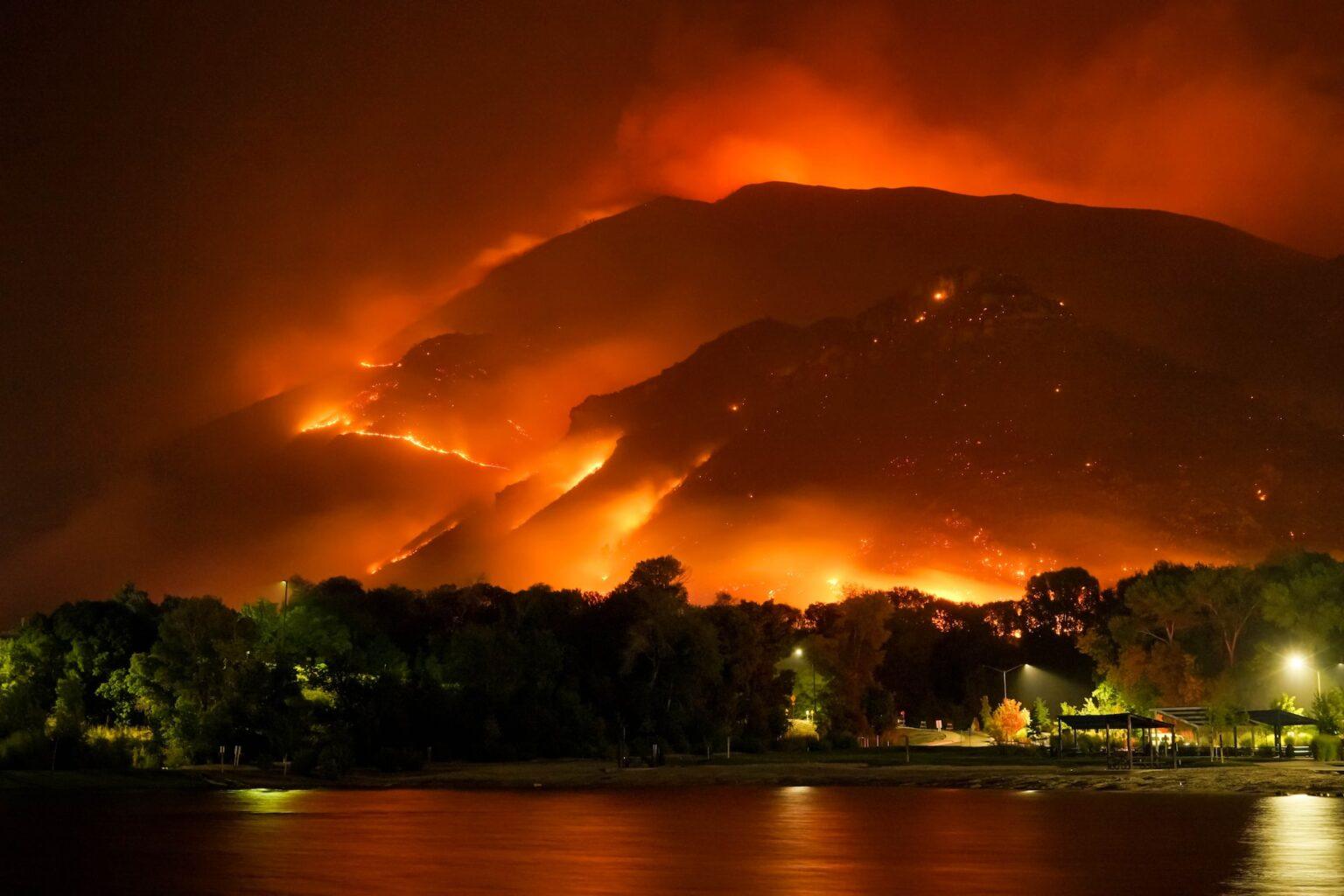For those on the receiving end, capitalism comes with many risks. Yet, assessing these risks is a tricky business. Nonetheless, British insurer Lloyd’s Register has done just that. Its 2020 World Risk Poll asked 150,000 people in 142 countries about the risks they face. The global survey looked at six key areas: women at risk, safety at work, food safety, cyber risk, global warming, and trust.
At the time of the report, 27% of all women worldwide felt less safe than they did five years ago, fearing violence and harassment. Surprisingly, female workers in Australia ranked 6th in the world for women who experienced violence and harassment. At the same time, 19% of the world’s workers said they had been seriously injured while working. Globally, more men are injured than women.
Worse, 77% — about one billion — globally said they or someone they knew personally suffered serious harm in the past two years from the food they ate. 14% said the same about the water they drank. Globally, 48% worried about genetically modified foods while 71% worried about the three risks that came with Internet use: disinformation, fraud, and cyberbullying.
Meanwhile, 77% of people worldwide recognised the threat global warming will cause in their country over the next twenty years. Strangely, men viewed global warming less seriously than women. Even more threatening was that the USA, the second-biggest carbon emitter in the world, had the highest percentage of global warming deniers in high-income countries with 21% of people viewing global warming as not a threat at all.
Worryingly, only 25% of those surveyed trusted our government to provide critical infrastructure for food, water, and power. People in Afghanistan, Lebanon and Iraq trusted their government the least while people in Singapore and the United Arab Emirates trusted their government the most.
Such feelings were closely associated with perceptions of the economy and law enforcement. Expectedly, socially and economically vulnerable people felt the least safe. Latin American/The Caribbean and Southern Africa remained the regions with the highest violent crime rates with 59% and 58% respectively fearing crime and violence. Surprisingly, 27% of people in Australia and New Zealand also feared crime and violence while Europeans did so to a much lesser degree. The safest area was Eastern Asia – China, South Korea, and Japan.
Half of the US women surveyed (51%) lacked confidence in the police. However, in low-income countries, the dangers associated with widespread poverty, violence and instability were the greatest sources of insecurity. 24% of the participants saw road-related accidents as a serious risk, 19% saw crime and violence as a significant threat, while 18% feared the deterioration in personal health as most threatening. Comparatively few people (4%) feared cooking accidents and even less (0.5%) feared drowning.
Interestingly, 51% of Norwegians feared road accidents even though Norway has only 2.7 road fatalities per 100,000. By comparison, just 3% of people in Madagascar feared road accidents but has 28.6 road deaths per 100,000. Globally, road hazards were linked to age. 27% of young and 15.5% of older adults feared road accidents.
More threatening than road accidents were the number of criminal killings. Latin America comprises 8% of the world’s population, but it accounts for 38% of all criminal killings globally. El Salvador has the worst homicide rate, followed by Jamaica. The report noted that poverty, unemployment and inequality dramatically increased the risk of violence.
Despite the rather successful ideology of neoliberalism, the report’s empirical evidence showed the very opposite. Poverty, unemployment, and inequality were fostered by neoliberalism. This is what neoliberalism’s godfathers — Hayek — and his apostles been nurturing for decades.
Worst still is war which can lead to the deterioration of the health system. Consequently, the three countries that stand out when it comes to health concerns are Iraq, Libya, and Afghanistan. Interestingly, health-related problems are most frequently named as the top safety risks in Eastern Europe, which is highly surprising. Shouldn’t the free market have made things so much better during the last thirty years of capitalist freedom? Thanks to the elimination of evil socialism during the 1990s, today Eastern European countries have some of the world’s highest mortality rates; however, the freed-from-socialism region ‘has a weak healthcare infrastructure’, Lloyds’ Report noted.
To many Eastern European problems and financial worries can be attributed to the demise of socialism. The East European country of Lithuania, for example, is a country where 43% of people said that economic difficulties were one of the biggest risks. Overall, about 17% said they worried about financial risks.
A much greater risk than money worries was global warming. Globally, 41% of people saw global warming as a serious threat to their country over the next twenty years. While many people trusted their government to fight global warming, even more people trusted their government regarding safety regulation. Worldwide, nine out of ten people, for example, said governments should require businesses to adopt safety procedures. In other words, there was support for regulation that would reduce risks and improve safety, especially in the workplace. Yet, this is another area where people’s choice contradicts neoliberalism’s ideology of deregulation. In stark contrast to the apostles of neoliberalism and many of our corporate media, 90% of us thought that regulations were a good thing – particularly in the workplace.
Risks in Workplaces
This comes on the background of an ILO estimate of nearly three million people who died at work with a further 374 million people suffering non-fatal work-related injuries resulting in at least four days absence from work each year. Yet, the real number could be even higher as many governments do not keep good records, if at all. Remarkably, workers in Europe, Australia and New Zealand were most likely to name physical violence and harassment as a top risk to their safety at work. However, more men (23%) than women (14%) reported being injured at work. Not surprisingly, most workers embraced safety rules at their workplace and thought it was a good thing.
Despite being more vulnerable to workplace injuries, workers with lower levels of education were less likely to say safety rules at work were a good thing. Meanwhile, 89% of workers globally with sixteen or more years of education thought safety rules were good. This fell to 72% for those with only eight years of education.
Of those who said they had been seriously injured while working, 69% of Sierra Leone workers said so. In Gambia, 64% and in Malawi 62% agreed with that. At the safer end was Italy with 7%, Singapore at 5%, and surprisingly (coal mining) Poland at 4%. In other words, workers in Singapore, Italy and Poland felt safe while working.
In terms of jobs, the front runners of unsafe work remained mining, quarrying, manufacturing, construction, and public utilities like electricity, gas, and water. As one would expect, workplace injury risks were higher among workers with lower levels of education (24% reported injuries). In turn, the higher your education, the more likely you would survive capitalist working regimes. The fact that some people could work from home during the coronavirus pandemic saved many lives. At the same time, many of those who died could not work from home, like healthcare workers, nurses and medical doctors.
Some of the most common workplace injuries were trips, slips and falls while hazardous workplace activities were operating machinery and being exposed to chemicals which were mostly related to manufacturing processes. As countries move from manufacturing into the service industry — from blue-collar to white-collar — new risks emerge. Not surprisingly, in countries where this shift has advanced the most, one finds workplace violence and harassment on the rise. The top five countries were France, Australia, Finland, Belgium, and New Zealand. Europe’s bottom five were Switzerland, Austria, Lithuania, Latvia, and Estonia.
Overall, more women (24%) in high-income countries than men (18%) say they are at risk of physical violence and harassment at work. Harassment has two defining ingredients. It is male vs female, and it is top-down — not bottom-up. Manager bully workers. When asked, have you experienced workplace violence and harassment in the last two years, 30% of workers in New Zealand and Southern Africa and 27% of workers in Central and Western Africa said yes. On the upside, only 4% said so in Eastern and Central Asia and Eastern Europe.
Workers who experienced physical violence and harassment are more likely to have also experienced mental health issues. The link between mental health and absenteeism, presenteeism and productivity is well researched. WHO estimates that depression and anxiety disorders cost the global economy $1 trillion each year in lost productivity.
The key issue of workplace health remains a strong and positive safety culture at work. This is an organisational culture in which employees are empowered to report unsafe situations and behaviours without fear of punishment. Senegal and Pakistan stand out as countries where this is not the case. As one might expect, workers living in countries with weaker safety systems or few regulatory protections were less likely to say they felt free to report safety problems to their employers without fear of retribution. Again, state regulation and law enforcement are the key — not neoliberalism’s deregulation. But that is not enough.
Worldwide, two in three workers (68%) said their employer was responsible for their safety. Occupational Health and Safety, also known as the duty of care, falls onto the employer. Lloyd’s said, their findings suggest that organisations aiming to improve workplace safety should engage with labour unions as well as the government.
Again, it suggests the exact opposite of neoliberalism and Hayek’s distaste of ‘mighty trade unions’ as he says in his ideological master catechism. The empirical facts speak against neoliberalism and Hayek. Instead of neoliberal deregulation, anti-unionism, the free market, etc., decades of Gallup research shows that employee engagement is linked to a host of positive outcomes, including and, most notably, improved safety.
Global Warming
Virtually, the same goes for global warming where the free market may very well lead to what Wallace-Wells calls The Uninhabitable Earth. Almost all climate scientists agree that global warming is associated with human activities and that it is a serious threat to people and their livelihoods. Yet, the impact of global warming will vary depending on six key factors:
- geographical location — some areas in the world are more affected than others;
- institutional and infrastructure quality — non-neoliberal countries with a functioning public infrastructure will do better;
- levels of deforestation — this will impact us all;
- mitigation — a global problem to which most countries have no real solution;
- adaptation efforts — some countries are better prepared than others; and
- finally, the overall level of economic development — rich countries that have largely caused global warming can protect themselves better than developing countries that have not caused global warming.
Globally, most people have realised that climate change poses either a very serious or a somewhat serious threat to people. Yet, the US – the second-biggest carbon emitter in the world – has the highest percentage of climate change deniers among high-income countries. A staggering 21% of people in the USA viewed climate change as not a threat at all. Worldwide, the awareness of global warming increased with the level of education. Still, global warming awareness hardly varies between age groups: 42% of 15-29-year-olds saw global warming as a very serious threat; 41% aged 30-49; 34 aged 50-64; and 38% 65 and older.
Artificial Intelligence and the Internet
Worldwide, people associate artificial intelligence (AI) with job loss, violation of privacy, and the misuse of personal data. Yet only 9% of those surveyed thought artificial intelligence would harm people in the next twenty years. In China, one of the leaders in AI technology, 59% thought AI would mostly help us while the global average was around the 40% mark. In Eastern Asia, 11% thought AI would bring mostly harm to us.
The Wellcome Global Monitor showed two distinct clusters. People in four countries believed AI would harm us: Brazil, USA, Mexico, and the UK (democracy). Yet, there were four countries where trust in science was high, and people believed AI would help us: Singapore, Indonesia, Saudi Arabia, and China (non-democracies). Similarly, people associated three risks with the Internet:
- online bullying,
- receiving false information and
- becoming the victim of fraud.
Worldwide, slightly more than half (53%) of people said they had used the Internet. Regionally, this figure ranged from 90% in Northern America to 21% in Eastern Africa and Southern Asia. More men used the Internet than women. Internet use also declined with age while increased with the level of education.
Yet, the report showed that 30% were worried about online bullying, and there was a clear link between online usage and the risk of online bullying. 57% were worried about receiving false information, and 45% feared becoming a victim of fraud. Overall, more internet users worried about receiving false information online than any of the other Internet threats.
Generally, Lloyd’s World Risk Poll identified many of the risks human beings faced under capitalism. Perhaps the most severe risk was that of global warming. With the exception of the USA and Australia, the world has largely realised the dangers of global warming.
Next to global warming, working under managerial regimes in present-day capitalism remained one of the most serious risks people endure every day of the week for about eight hours a day (in many countries) and roughly forty years of their working lives. Finally, the uptake of the Internet resulted in online bullying, false information, accidental misinformation deliberate disinformation and Internet fraud.
To conclude, the factual evidence delivered by Lloyd’s Register’s 209-page report surveying 150,000 people in 142 countries paints a grim picture. Lloyds is an organisation generally not exposed to the danger of harbouring socialist or radical environmentalist thoughts. Yet, its factual evidence contradicts virtually all key elements of neoliberalism’s belief system.
The free market is not going to mitigate risks. Instead, it will only increase risks. Deregulation turbo-charges the chance of experiencing ill health and workplace injuries while opening the Internet to fraud, fake news, and online bullying.
In a sharp rebuke of neoliberalism, the report suggested more — not less — regulation is needed. Finally, Lloyd’s Register also advocated for the cooperation of employers, trade unions, and the government to reduce risks. This is the exact opposite of what neoliberalism zealous promoters advocate. In short, Lloyd’s report presents a devastating blow to the ideology of neoliberalism.
Photo: The capitalism-ridden world economy and society is full of risks (source: The Barricade)
This article was originally published at the Znet Magazine on 2 February 2021.
The Barricade is an independent platform, which is supported financially by its readers. Become one of them! If you have enjoyed reading this article, support The Barricade’s existence! We need you! See how you can help – here!










